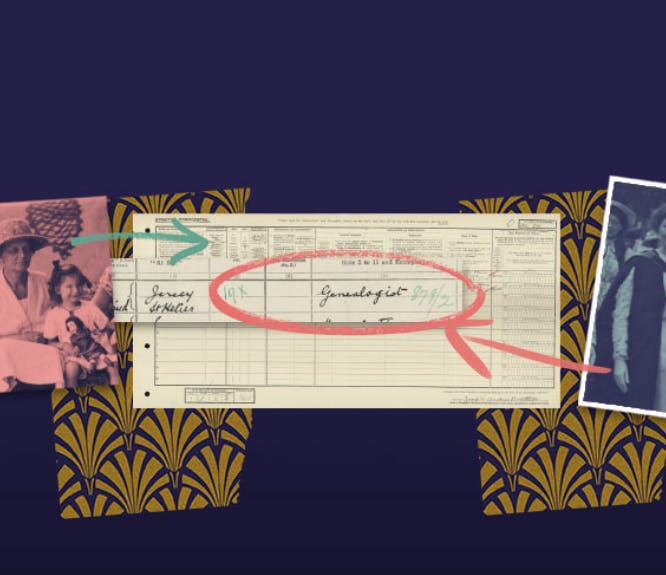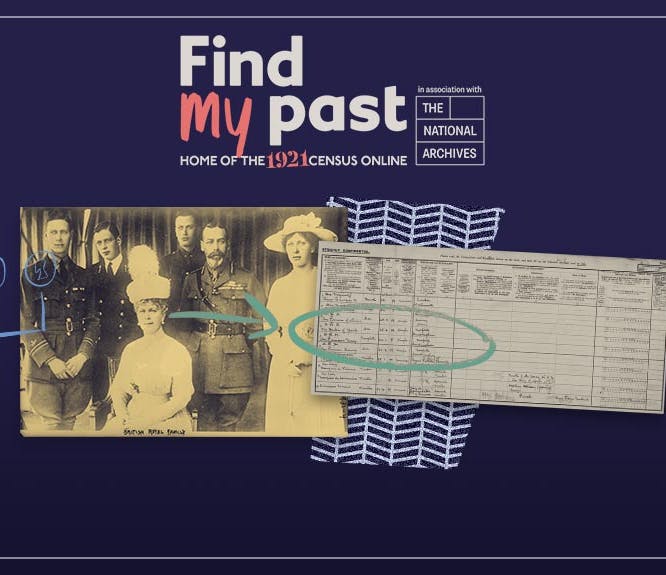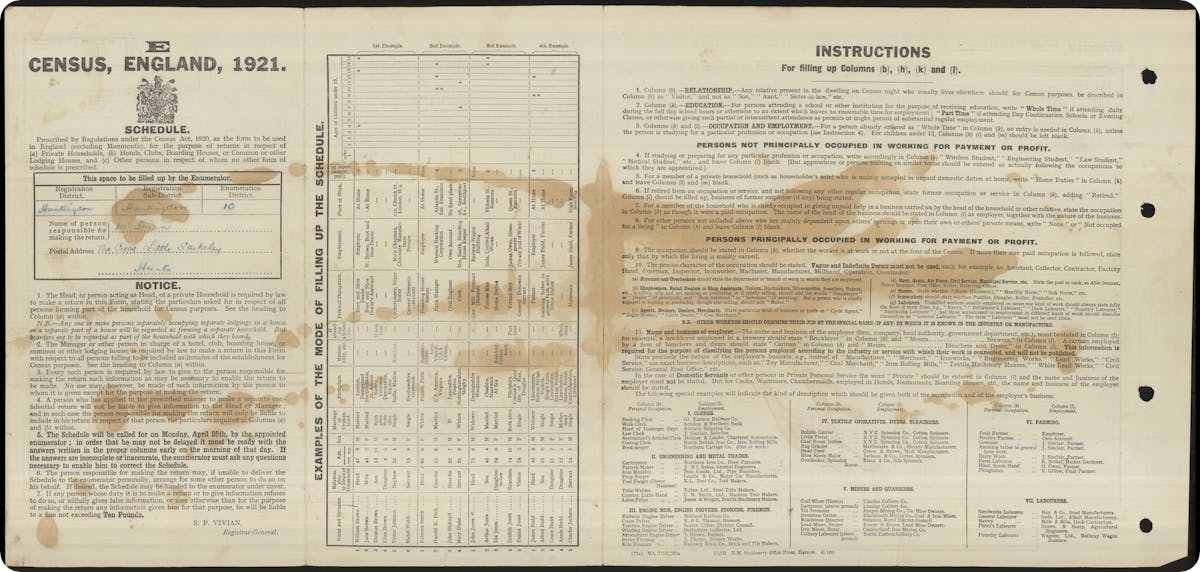The 1921 Census is now online for the very first time
5-6 minute read
By Niall Cullen | October 11, 2022

In partnership with The National Archives, the 1921 Census of England & Wales is now exclusively online at Findmypast.
After 100 years locked away, the highly-anticipated 1921 Census of England & Wales is now online and accessible for the very first time. There is no end to the secrets and surprises hidden in the Census and now there is no limit to the access you can enjoy. All you need to do is upgrade or subscribe to a Premium subscription.
It's taken three years of intensive conservation and digitisation work with the help and support of the Office for National Statistics to make the Census available to search and explore online, only at Findmypast.
Taken on June 19 1921 after being delayed by two months due to industrial unrest, the 1921 Census saw over 38,000 enumerators dispatched to every corner of England and Wales to capture the details of more than 38 million people. This included over 8.5 million households as well as all manner of public and private institutions ranging from prisons and military bases to public schools and workhouses.
Offering more detail than any previous census, the 1921 Census of England & Wales not only asked individuals about their age, birthplace, occupation and residence (including the names of other household members and the number of rooms), but also their place of work, employer details, and gave 'divorced' as an option for marital status.
Now accessible for the first time, these valuable documents provide you with millions of unique opportunities to uncover the lives of your ancestors, the history of your home and communities and a fascinating snapshot of life during an era that resonates with where we find ourselves today.
Falling between the two world wars, the records paint a disparate picture of England and Wales. From the Royal household to the average working-class citizen, everyone in the country at the time is accounted for. At the time, the nation was still reeling from the impact of the First World War, a major housing crisis and the Spanish flu pandemic, as well as bearing the brunt of a ravaged economy and industrial turmoil.
The publication of these documents marks the last significant census release for England and Wales in many of our lifetimes as the 1931 Census was destroyed in a fire and the 1941 Census was never captured due to the Second World War. The next census will not be available until 2052.
Snapshot of a nation
The 1921 Census reveals the rapid social and cultural change the country was undergoing, with the changing role of women and the impact of World War 1 proving particularly apparent.
Owing to the vast number of men who fell in the war, the Census reveals there were 1,096 women for every 1,000 men recorded, with this discrepancy being the biggest for those aged between 20 and 45. This means there were over 1.7 million more women than men in England and Wales, the largest difference ever seen in a census.
Over 16,000 people recorded their marital status as the newly-added 'divorced' but this figure is likely to be much higher due to the stigma surrounding divorce at the time.
There was a 35% increase in the number of people recorded in hospitals from the 1911 Census, three-quarters of whom were men. Presumably many were still suffering from wounds received in the war.
Thanks to the additional information recorded on the status of parents and children, the Census also reveals the devastating impact the war had on families with over 730,000 fatherless children being recorded versus 261,000 without a mother.
As a result of the number of men killed or left permanently disabled, the 1921 Census also saw many more women stepping into employment, with an increase in the number of women working as engineers, vets, barristers, architects and solicitors.
Notes of protest and pleas have been discovered among the schedules from struggling individuals, including that of 44-year-old Robert Richard Stevens who could not find work after the war, and had thirteen children to provide for.
Just as we are coping with Covid-19 today, the 1921 Census also reveals how the Spanish flu affected the psyche of the population, with one record being stained with disinfectant.
It features a comment about how the writer was doing everything he could to avoid catching the illness.
Famous faces
From the famous to the infamous, the 1921 Census documents also provide a vivid snapshot of the lives of prominent individuals alive at that time, including cultural icons such as:
- Lord of the Rings writer J.R.R. Tolkien
- Famous Five author Enid Blyton
- Peter Rabbit writer Beatrix Potter
- Winnie the Pooh author A.A. Milne
- The creator of Sherlock Holmes, Arthur Conan Doyle
On the night the Census was taken Conan Doyle was playing host to a number of mystics and psychics, suggesting he may have been holding a seance at the time.
Other notable individuals whose details come to life in the pages of the 1921 Census include:
- National treasure Sir Captain Tom Moore
- War hero and mathematician Alan Turing
- Suffragette Millicent Fawcett
- Prime Minister David Lloyd George
- The first female MP to take her seat in Parliament Nancy Astor
- The first female racing car driver Dorothy Levitt
- Scientist Alexander Fleming
Real-life members of the Peaky Blinders, including founding member Thomas Mucklow, and other notorious criminals such as serial killers John Haigh, the 'acid bath murderer' and Reginald Christie of 10 Rillington Place can also be found within the records.
For the first time, householders could specify the names and addresses of their employer and even the materials they worked with. As such, this was the first census to record many of the iconic brands which are now household names, including:
- Boots
- Cadbury
- Selfridges
- Schweppes
- Sainsbury’s
- Rolls Royce
- McVities
The records reveal where and how the workers that helped build these businesses lived.
Bringing the 1921 Census online
As the largest mass-digitisation project ever completed by either The National Archives or Findmypast, this release is the result of three years of highly skilled work conducted under strict security measures to ensure all census data remained completely confidential.
Since winning the competitive tender to digitise the Census in 2019, hundreds of Findmypast conservation specialists, technicians and transcribers have painstakingly conserved, digitised and transcribed more than 30,000 bound volumes of original documents stored on over a mile of shelving.
With our innovative use of search and data matching technology, you can now search all 38 million records by name, location, address, birthplace, nationality, occupation, employer and more to instantly reveal valuable details about the history of your family, home or communities.
The 1921 Census is now available online, only at Findmypast. Where will your past take you?
Related articles recommended for you

Genealogists in the 1921 Census of England and Wales: discover a profession that stands the test of time
History Hub

The incredible true story behind The Ministry of Ungentlemanly Warfare
History Hub

Inspirational women from history: Victorian astronomer Catherine Octavia Stevens
History Hub






